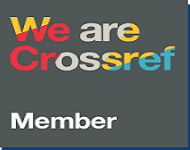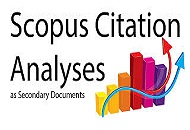Millealab as A Virtual Reality-based Learning Platform for Slow Learners Students
DOI:
https://doi.org/10.33394/jp.v12i1.13692Keywords:
Learning Media, Slow learners, Millealab.Abstract
This research aims to analyze the to find out the response of using Millealab on the material comprehension of slow learners. This study used a qualitative approach with a case study method. The  subjects in this study were slow learners grade 8 students at SMP Plus Rahmat Kediri, East Java. The instruments used in this research are observation, interview, and observation which were then analyzed inductively. The result show that virtual reality (VR) helps slow learners connect abstract concepts with real experieces, which supports their understanding. The findings have immportant implications in inclusive education, where VR can improve the cognitive growth and academic understanding of slow learners students.
References
Abbas Shah, S. F., Mazhar, T., Shahzad, T., khan, M. A., Ghadi, Y. Y., & Hamam, H. (2024). Integrating educational theories with virtual reality: Enhancing engineering education and VR laboratories. Social Sciences and Humanities Open, 10(November), 101207. https://doi.org/10.1016/j.ssaho.2024.101207
Alkahfi, M. I., Mastur, M., & Utama, A. H. (2024). Utilization Of The Millealab Application As A Virtual Reality Media To Support Self-Directed Learning. Eduvest - Journal of Universal Studies, 4(4), 2090–2103. https://doi.org/10.59188/eduvest.v4i4.1152
Creed, C., Al-Kalbani, M., Theil, A., Sarcar, S., & Williams, I. (2023). Inclusive Augmented and Virtual Reality: A Research Agenda. International Journal of Human-Computer Interaction, 40(20), 6200–6219. https://doi.org/10.1080/10447318.2023.2247614
Denny, E., & Weckesser, A. (2022). How to do qualitative research?: Qualitative research methods. BJOG: An International Journal of Obstetrics and Gynaecology, 129(7), 1166–1167. https://doi.org/10.1111/1471-0528.17150
Dwijayani, N. M. (2019). Development of circle learning media to improve student learning outcomes. Journal of Physics: Conference Series, 1321(2). https://doi.org/10.1088/1742-6596/1321/2/022099
Harnisa, S. (2023). Analysis of the Development of VR (Virtual Reality) Based Interactive Learning Media Assisted by MilleaLab to Improve Learning Outcomes on the Material of Free Fall Motion Class XI in SMA Bengkulu City. IJOEM Indonesian Journal of E-Learning and Multimedia, 2(3), 110–115. https://doi.org/10.58723/ijoem.v2i3.200
Herdina, G. G. H., & Fakhrurriana, R. (2023). (E-Reading) Electronic Reading: For Active and Interactive Learning Reading Based on Open-Source Software (OSS). International Conference on Education, 423–428.
Janah, R., & Aprilia, I. D. (2023). Development Of A Beginning Reading Program For Slow Learners With Montessori Techniques. Proceeding of International Conference on Special Education in South East Asia Region, 2(1), 118–130. https://doi.org/10.57142/picsar.v2i1.72
Kavanagh, S., Luxton-Reilly, A., Wuensche, B., & Plimmer, B. (2017). A systematic review of Virtual Reality in education. Themes in Science & Technology Education, 10(2), 85–119.
Lee, H. Y., Musa @ Zakaria, N., Wong, Y.-S., Mohd Nor, N., Mahsan, I. P., Wong, M.-J., & Lee, H.-L. (2024). Communication Technology-Enhanced Collaborative and Constructivism Learning in Improving Students’ Skills on Artworks Production: A Structural Equation Modelling Approach. PaperASIA, 40(4b), 202–225. https://doi.org/10.59953/paperasia.v40i4b.176
Lund, B. D., & Wang, T. (2019). Kansas Library Association College and University Libraries Effect of Virtual Reality on Learning Motivation and Academic Performance : What Value May VR Have for Library Instruction ? Effect of Virtual Reality on Learning Motivation and Academic Performa. 9(1).
Nassaji, H. (2020). Good qualitative research. Language Teaching Research, 24(4), 427–431. https://doi.org/10.1177/1362168820941288
Ningsih, P. E. A., & Sari, M. N. (2021). Are Learning Media Effective in English Online Learning?: The Students’ and Teachers’ Perceptions. Tarbawi : Jurnal Ilmu Pendidikan, 17(2), 173–183. https://doi.org/10.32939/tarbawi.v17i2.1012
Nurliasari, L. (2024). Inclusion of Students ’ Challenge and Perspective Toward Millealab in Smp Plus Rahmat. 57–60.
Olmos-Vega, F. M., Stalmeijer, R. E., Varpio, L., & Kahlke, R. (2023). A practical guide to reflexivity in qualitative research: AMEE Guide No. 149. Medical Teacher, 45(3), 241–251. https://doi.org/10.1080/0142159X.2022.2057287
Puspitarini, Y. D., & Hanif, M. (2019). Using Learning Media to Increase Learning Motivation in Elementary School. Anatolian Journal of Education, 4(2), 53–60. https://doi.org/10.29333/aje.2019.426a
Puspitasari, F., Ediyanto, E., Efendi, M., & Sunandar, A. (2021). Improving Reading and Calculation Ability through Audio Visuals Media in Indonesian Elementary School Student with Slow Learner: A Literature Study. IJDS: Indonesian Journal of Disability Studies, 8(02), 481–486. https://doi.org/10.21776/ub.ijds.2021.008.02.14
Sultan, U. I. N., & Hasanuddin, M. (2023). the Role of the Teacher in Handling Slow Learner Children. 688–691.
TIKASARI, W. Y. (2020). Sentence Production in Slow Learner Student and Its Implication on Learning: Case Study At Sdi Melati Nusantara. JURNAL PAJAR (Pendidikan Dan Pengajaran), 4(6), 1112–1120. https://doi.org/10.33578/pjr.v4i6.8059
Utami, L. P. R. A., Suwastini, N. K. A., Dantes, G. R., Suprihatin, C. T., & Adnyani, K. E. K. (2021). Virtual reality for supporting authentic learning in 21-st century learning. Jurnal Pendidikan Teknik Dan Kejuruan, 18(1), 132–141. https://ejournal.undiksha.ac.id/index.php/JPTK/article/viewFile/32376/17649
Voskamp, A., Kuiper, E., & Volman, M. (2022). Teaching practices for self-directed and self-regulated learning: case studies in Dutch innovative secondary schools. Educational Studies, 48(6), 772–789. https://doi.org/10.1080/03055698.2020.1814699
Wang, X. (2023). Exploring positive teacher-student relationships: the synergy of teacher mindfulness and emotional intelligence. Frontiers in Psychology, 14(November), 1–14. https://doi.org/10.3389/fpsyg.2023.1301786
Widodo, J. P., Musyarofah, L., & Slamet, J. (2022). Developing A Moodle-Based Learning Management System (LMS) for Slow Learners. Jurnal Inspirasi Pendidikan, 12(1), 1–10. https://doi.org/10.21067/jip.v12i1.6346
Zulherman*, Z., Amirulloh, G., Purnomo, A., Aji, G. B., & Supriansyah, S. (2021). Development of Android-Based Millealab Virtual Reality Media in Natural Science Learning. Jurnal Pendidikan Sains Indonesia, 9(1), 1–10. https://doi.org/10.24815/jpsi.v9i1.18218
Zulherman, Z., Aji, G. B., & Supriansyah, S. (2021). Android Based Animation Video Using Millealab Virtual Reality Application for Elementary School. JPI (Jurnal Pendidikan Indonesia), 10(4), 754–764. https://doi.org/10.23887/jpi-undiksha.v10i4.29429
Downloads
Published
How to Cite
Issue
Section
Citation Check
License
License and Publishing Agreement
In submitting the manuscript to the journal, the authors certify that:
- They are authorized by their co-authors to enter into these arrangements.
- The work described has not been formally published before, except in the form of an abstract or as part of a published lecture, review, thesis, or overlay journal.
- That it is not under consideration for publication elsewhere,
- That its publication has been approved by all the author(s) and by the responsible authorities tacitly or explicitly of the institutes where the work has been carried out.
- They secure the right to reproduce any material that has already been published or copyrighted elsewhere.
- They agree to the following license and publishing agreement.
Copyright
Authors who publish with Jurnal Paedagogy agree to the following terms:
- Authors retain copyright and grant the journal right of first publication with the work simultaneously licensed under a Creative Commons Attribution License (CC BY-SA 4.0) that allows others to share the work with an acknowledgment of the work's authorship and initial publication in this journal.
- Authors are able to enter into separate, additional contractual arrangements for the non-exclusive distribution of the journal's published version of the work (e.g., post it to an institutional repository or publish it in a book), with an acknowledgment of its initial publication in this journal.
- Authors are permitted and encouraged to post their work online (e.g., in institutional repositories or on their website) prior to and during the submission process, as it can lead to productive exchanges, as well as earlier and greater citation of published work.
Licensing for Data Publication
-
Open Data Commons Attribution License, http://www.opendatacommons.org/licenses/by/1.0/ (default)






